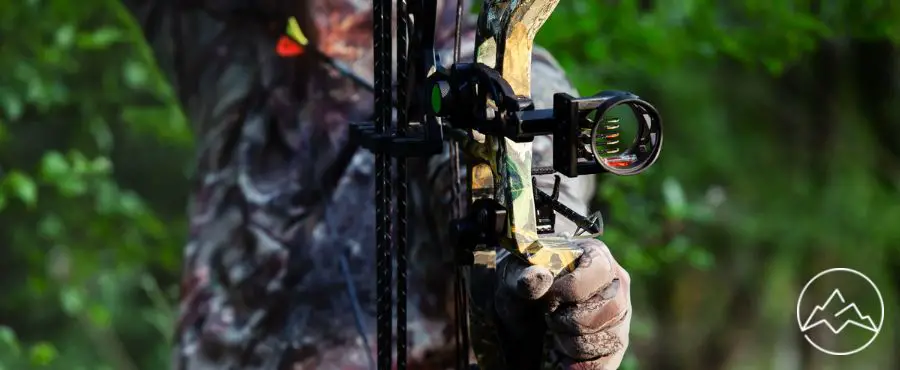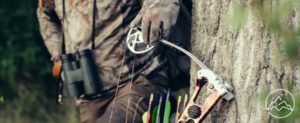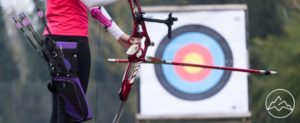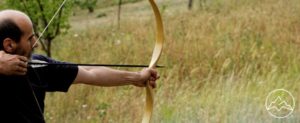In the world of archery, bow slings are like a safety net, preventing bows from slipping away and ensuring their protection. Bow slings come in various types, including finger slings, wrist slings, and hybrid slings, each serving a specific purpose. Finger slings, attached to the forefinger or middle finger, prevent the bow from escaping the archer’s grasp, while wrist slings encompass the wrist, allowing for a relaxed grip. These slings not only enhance accuracy but also provide the archer with a more comfortable shooting experience. However, choosing the right sling can be a daunting task, as it depends on factors such as the archer’s preference, bow type, shooting technique, and competition rules. This ultimate guide to bow slings aims to offer a comprehensive understanding of the different types, benefits, and uses of slings, assisting archers in making an informed decision to enhance their accuracy and protect their beloved bows.
Key Takeaways
- Finger slings and wrist slings are important gear in archery to prevent the bow from falling and getting damaged.
- Using a sling can improve accuracy by allowing for a looser grip on the bow.
- Finger slings are favored by recurve bow shooters, while compound bow shooters prefer wrist slings.
- The choice between a finger sling and a wrist sling depends on the type of bow and shooting technique.
Types of Slings
The pre-existing knowledge provides information on various types of slings, including finger slings, wrist slings, and hybrid slings, which are used in archery to enhance accuracy and protect the bow from damage. Finger slings are favored by recurve bow shooters for their ability to prevent the bow from jumping out of the hand and for the free fall swing technique. However, they can restrict finger movement and may be harder to use. On the other hand, wrist slings completely encompass the wrist, allowing for a relaxed grip and improved comfort. They are preferred by compound bow shooters but may make it difficult to achieve proper follow-through. Hybrid slings combine features of both finger and wrist slings, providing added security and reliability. When considering slings, archers should also consider personal preference, competition rules, and test different sling styles. Some popular brands of slings include AAE, Neet, and Limbsaver.
Benefits and Uses
A key advantage of incorporating a well-designed sling into archery practice is the facilitation of a relaxed grip on the bow, akin to a gentle embrace that ensures stability and minimizes the risk of damage. When using a bow sling, it is important to know how to properly attach and adjust it for optimal performance. Here are some tips for attaching and adjusting a bow sling:
- Start by determining the correct length of the sling. It should be long enough to comfortably fit around your wrist or fingers, but not so long that it hinders your movement.
- Attach the sling to your bow by looping it through the designated attachment point, whether it’s a D-ring or a loop on the handle.
- Adjust the tension of the sling to ensure a secure but not overly tight fit. This will allow for a relaxed grip on the bow while still preventing it from slipping out of your hand.
- Experiment with different attachment points and adjustments to find the most comfortable and effective setup for your shooting style.
To improve accuracy with a bow sling, consider the following tips:
- Practice maintaining a consistent grip pressure. The sling should allow for a looser grip, but it’s important to find the right balance between relaxation and control.
- Focus on proper follow-through. The sling can help stabilize the bow during the release, allowing for a smooth and controlled follow-through motion.
- Experiment with different shooting techniques, such as the free fall swing, which can be enhanced by the use of a finger sling.
By properly attaching and adjusting a bow sling and following these tips, archers can enhance their accuracy and overall shooting experience.
Choosing the Right Sling
When considering which type of sling to choose for archery, it is important to evaluate the individual’s shooting style, bow type, and personal preferences. Finger slings and wrist slings both have their pros and cons. Finger slings, favored by recurve bow shooters, prevent the bow from jumping out of the hand and allow for the free fall swing technique. However, they can be harder to use and restrict finger movement. On the other hand, wrist slings, preferred by compound bow shooters, completely encompass the wrist and provide a relaxed grip on the bow handle. They are easier to use and more comfortable. Factors to consider when choosing a bow sling include the type of bow, shooting technique, and competition rules. It is recommended to test different sling styles to find the most comfortable option that enhances accuracy and overall shooting experience.
Frequently Asked Questions
How do I properly attach a finger sling to my bow?
Properly attaching a finger sling to a bow involves several steps. First, ensure that the sling is the correct length for your hand. Then, thread the sling through the front and back of the bow handle, making sure it is securely fastened. The benefits of using a finger sling include preventing the bow from falling and getting damaged, improving accuracy by allowing for a looser grip, and facilitating the free fall swing technique. Mastering the proper finger sling attachment is essential for archers seeking enhanced accuracy and protection.
Can I use a wrist sling on a recurve bow?
Yes, a wrist sling can be used on a recurve bow. Wrist slings are versatile accessories that provide several advantages when used with a recurve bow. They allow for a relaxed grip on the bow handle, improving accuracy by reducing hand torque. Wrist slings also provide added security and prevent the bow from falling and getting damaged. Additionally, they are easier to use and more comfortable compared to finger slings, making them a popular choice among recurve bow shooters.
Are there any specific care instructions for maintaining a bow sling?
Maintaining a bow sling is crucial for its longevity and optimal performance. To keep your sling in top condition, regular cleaning is recommended. Begin by removing any dirt or debris using a soft brush or cloth. For deeper cleaning, a mild soap solution can be used, followed by thorough rinsing and drying. Avoid using harsh chemicals or abrasive materials that may damage the sling. Additionally, periodically check for any signs of wear or fraying and replace the sling if necessary to ensure continued effectiveness and protection.
Can I use a hybrid sling on any type of bow?
Hybrid slings offer compatibility with various types of bows, including recurve and compound bows. They provide the advantages of both finger slings and wrist slings, combining features that enhance security and reliability. Finger slings offer improved accuracy by allowing for a looser grip on the bow, while wrist slings provide a more comfortable and easier user experience. Therefore, a hybrid sling can be a versatile choice for archers seeking the benefits of both finger slings and wrist slings on any type of bow.
Are there any specific safety precautions to keep in mind when using a bow sling?
Proper handling of bow slings is crucial to prevent injuries and ensure a safe archery experience. When using a bow sling, it is important to follow certain safety precautions. Firstly, make sure the sling is securely attached to the bow and your hand. Secondly, avoid placing your fingers near the bowstring when using a finger sling to prevent potential injuries. Lastly, maintain awareness of your surroundings and be mindful of others while using a bow sling. By adhering to these guidelines, you can enhance safety and prevent accidents during archery practice or competitions.
Conclusion
In conclusion, bow slings are essential accessories for archers, offering both enhanced accuracy and protection for their bows. Whether it’s a finger sling for recurve bow shooters, a wrist sling for compound bow shooters, or no sling for longbow archers, the choice depends on individual preference and shooting technique. By allowing for a looser grip on the bow and preventing it from falling, slings contribute to improved accuracy and a more enjoyable shooting experience. So, don’t forget to choose the right sling and enjoy the benefits it brings to your archery journey. Happy shooting!










